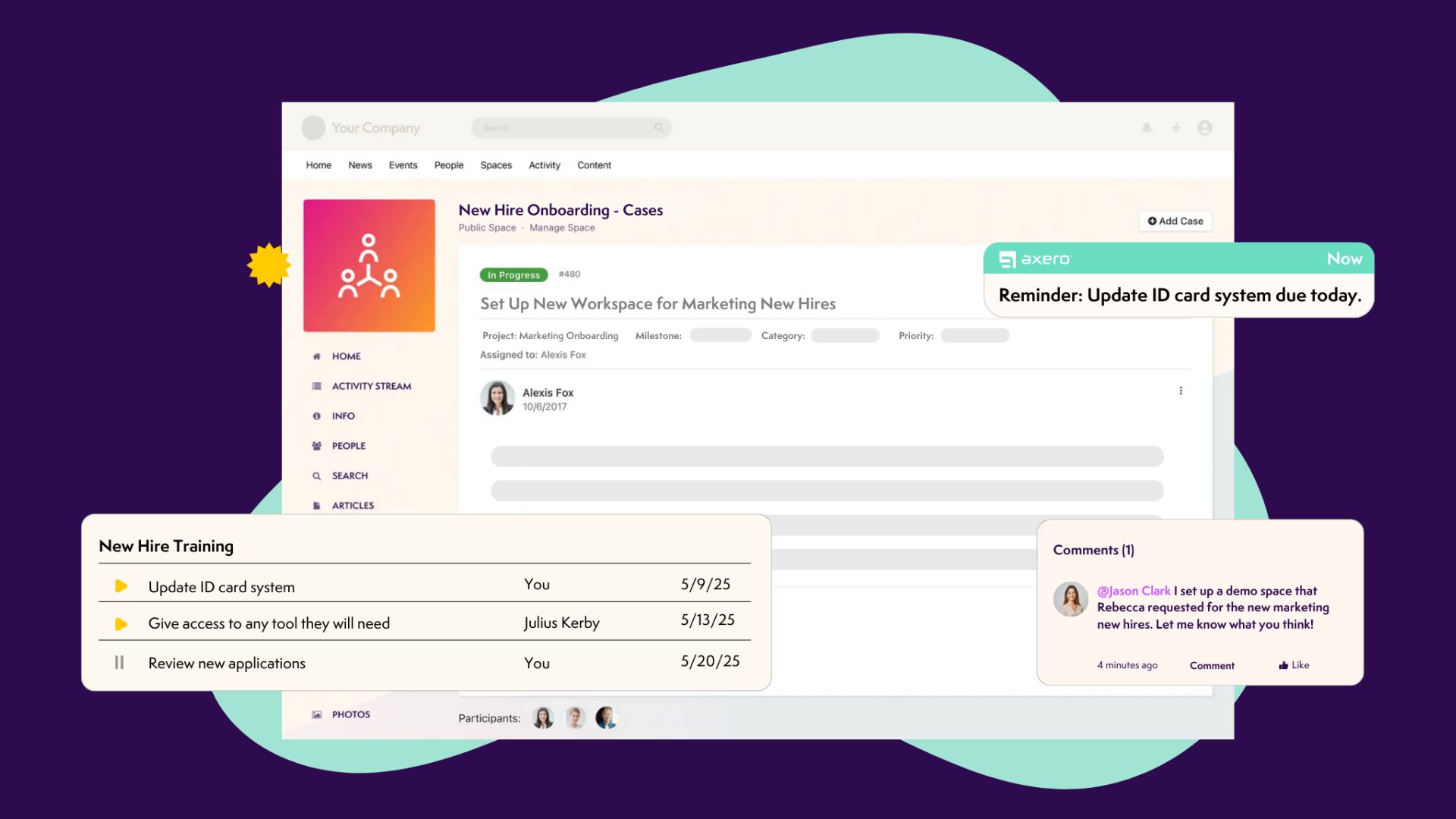Regardless of your industry, the majority of businesses need some type of internal collaboration tools to distribute knowledge and move projects forward successfully.
Internal collaboration platforms empower employees to be more productive, improve customer relationships, sharpen product development, efficiently problem solve, and connect deeper with the company culture and objectives.
For a software development company—like us at Axero—internal collaboration is imperative. Days are filled with conference calls, customer meetings, staff and team meetings, project discussions, brainstorming sessions, internal project reviews, code reviews, customer project reviews, and reporting.
Our ability to function successfully depends on management teams, development teams, and the customers being on the same page from the onset, through implementation, and after launch. These parties need to be hands-on and communicating with each other because collaboration is how we get our customers across the finish line.
Even if you’re not in the software development space, every organization has moving parts. When you can connect everyone and create an environment where knowledge sharing and collaboration is part of the business strategy, you empower a healthier and adaptable workforce.
Here enters the role of team collaboration software.
The benefits of internal collaboration platforms.
Internal collaboration platforms support your employees to work together easier and faster. Built-in features facilitates project collaboration by securely storing conversations, centralizing project management tools, supporting co-editing abilities on documents, and tracking progress.
The ability to quickly create a project wiki and post task lists, guidelines, milestones, and reports while being able to update frequently is a very effective way to manage projects on the fly. Combined with other features, like instant messaging, discussion forums, and the ability to share and keep all documentation in one place, internal collaboration software can replace email and consolidate communications and content in a single location accessible to project members.
Project managers can provide updates and answer queries, teams can ask technical questions and collaborate on problems, and management on both sides get clear visibility into what is going on and where things stand simply by logging in.
The pros to incorporating internal collaboration tools into the process are:
- Complete transparency
- Record of all communication automatically maintained
- Access to all communication in a single place
- Synchronized work schedules based on locations
- Quicker replies and meeting coordination
- Centralized location for documentation
- Workflow automation
Software companies have been at the forefront of adopting internal collaboration tools — and so can you! Internal collaboration benefits employees, customers, and external stakeholders because everyone is aligned.
Give collaboration software some thought and you’ll see a lot of the chaos settle, and productivity, engagement, and efficiency transform how your teams work.











